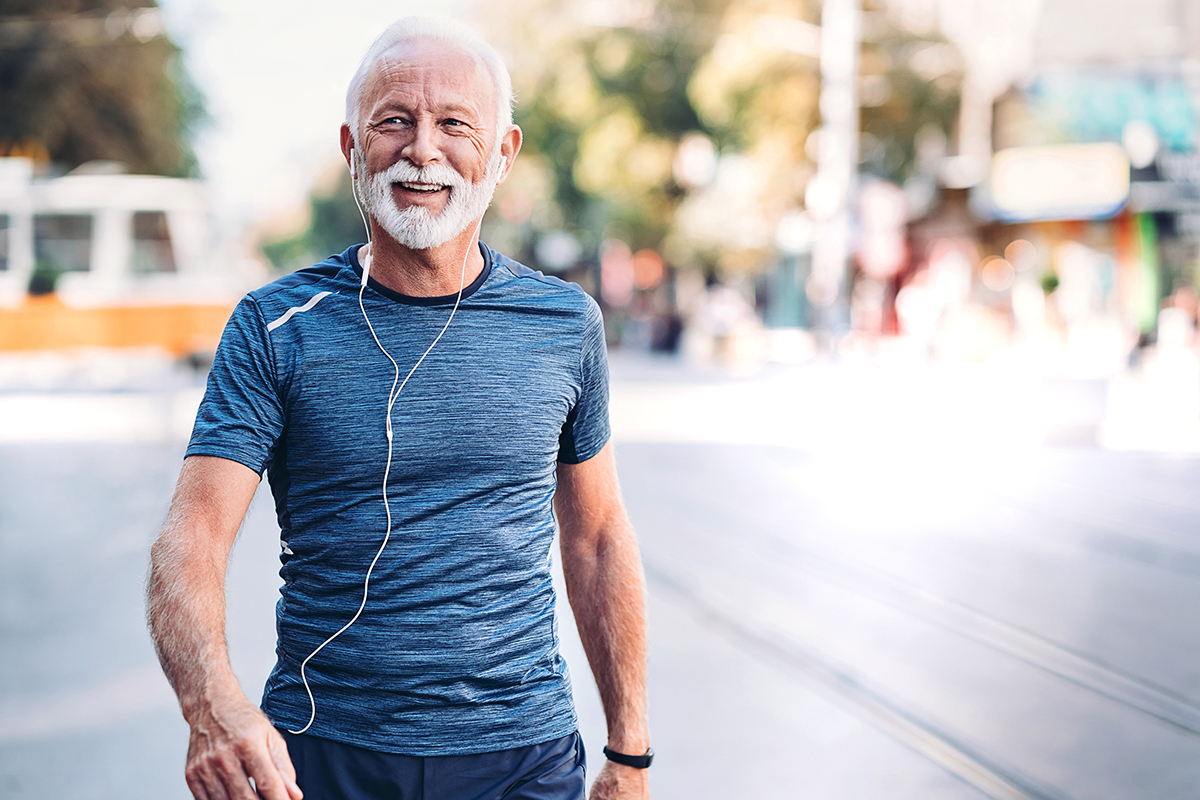COVID-19 Recovery: How to Start Exercising Again
Prepare your body and mind for a safe return to activity with these tips.

“I just want to get back to normal!”
This might be the number-one most uttered phrase of the past year.
We’re certainly on the right track: There are now three COVID-19 vaccines available, and as of July 29 more than 81 percent of U.S. adults age 65 and older are fully vaccinated, according to the Centers for Disease Control and Prevention (CDC). But there are still a lot of questions about how the coronavirus affects people’s health and what is and isn’t safe during and after the infection, especially for those with lingering symptoms such as fatigue, brain fog, or aches (known as “long COVID”).
One of the most common questions: What does returning to exercise after COVID-19 look like?
It’s an important one, because physical activity can help you recover after an illness, but there’s not a one-size-fits-all answer, says June M. McKoy, M.D., M.P.H., an academic geriatrician and associate professor of medicine, preventive medicine, and medical education at Northwestern University Feinberg School of Medicine.
That’s because the coronavirus affects different people in dramatically different ways. If you had a mild case—meaning you weren’t hospitalized and don’t have any lingering symptoms—experts recommend waiting at least seven days after all symptoms are completely gone to start slowly returning to exercise. If you dealt with more severe symptoms, were hospitalized, or have any underlying health conditions, your doctor should be your guide on when it’s safe to reintroduce movement.
When you’re ready, adopt these strategies for a smooth return to physical activity.
1. Start Small—Very Small
The consequences of being inactive for a period of time—especially with a respiratory illness that affects multiple parts of the body—are really hard to overcome, says Christian Sandrock, M.D., director of critical care and professor of medicine at UC Davis Health.
A slow and measured approach is essential, starting with an “anything counts” mentality. “If you can do things like yoga, a few core exercises, or even just some simple stretches, that’s helpful,” Dr. Sandrock says. “One unique feature of the post-COVID period is that the SARS-CoV-2 virus can alter your heart and lung function directly. As such, pushing yourself can be more detrimental in the COVID recovery period. No other virus does this.”
Start with whatever activity you can comfortably do, meaning it makes you feel better, not worse. As you get more used to regular movement, you can gradually progress to activities that challenge your heart and lungs more, like yard work or walking around your neighborhood.
2. Cut Yourself Some Slack
If you used to walk three miles per day or zip through a SilverSneakers group fitness class, feeling winded after a stroll around the block can be really disheartening. That’s understandable, but it’s important to accept that getting back to your previous fitness level after COVID-19 isn’t going to be quick—but it will happen! Take it one day at a time, and remember that consistent, small steps are key to reaching any goal.
Getting frustrated or having unrealistic expectations will only make it harder on you mentally—and that’s the opposite of what you need for a safe and full recovery, Dr. Sandrock says. “We want you to exercise, but your ability to gain strength is going to be at a glacial pace,” he says. Don’t push yourself beyond that pace until you’re ready. Progress is progress, no matter how slow.
3. Keep Tabs on Your Stats
A fitness tracker can be especially useful during this time. Dr. Sandrock recommends using one with a pulse oximeter, which measures the amount of oxygen in your blood, and a heart-rate monitor. The point is to recognize when you may be pushing too hard, not to strive for any specific target range.
Start by tracking your stats during basic everyday activities. For example, walk outside to get the mail or pick up the newspaper, and notice what happens to your heart rate. “If you felt fine doing these things pre-COVID and now your heart rate spikes to 130 or 140 beats per minute (bpm), that’s a sign you’re not ready for much activity yet,” Dr. Sandrock says.
For healthy adults, the American Heart Association (AHA) recommends the following target heart-rate zones during moderate-intensity exercise:
Age 65: 78 to 108 bpm
Age 70: 75 to 105 bpm
After COVID-19, it’s best to stick to the low end of these ranges and gradually build up over the course of a few weeks or even months.
Also, remember that wearable devices are not a substitute for medical scans or your doctor’s advice. They can help you monitor what’s going on in your body and learn what trends are normal for you, but when you notice something out of the ordinary, back off and call your doctor.
4. Know When to Stop
If you use a fitness tracker, signs that you need to scale back include:
• Your heart rate spikes or is more than 10 bpm higher than usual for any given activity
• Your oxygen level drops below 90 percent
Subscribe to our newsletter
It's quick and easy. You could be one of the 13 million people who are eligible.
Already a member? Click to discover our 15,000+ participating locations.
Follow Us
If you don’t use a tracker—and even if you do—listening to your body and trusting when it says you’re pushing too hard is essential, Dr. Sandrock says. If you start to feel tired or short of breath, take a break.
Stop exercising and call your doctor if you experience any of the following symptoms:
• Chest pain or tightness
• Heart palpitations
• Difficulty breathing during minimal activity
• Dizziness or balance problems
5. Don’t Be Afraid to Ask for Help
If you feel like you’re not progressing, check in with your doctor. He or she can recommend other professionals who may be able to help, such as a physical therapist, a personal trainer, or a respiratory therapist.
If you’re struggling to cope with light movement, you might benefit from a subacute rehabilitation program (SAR), Dr. McKoy says. This short-term inpatient program gives you access to various professionals who can tailor a recovery plan to meet your needs.
SAR is often covered by Medicare and some commercial insurers if a hospitalized patient meets specific criteria. However, if you do not meet the criteria and have Medicare, you can ask the hospital physician about a “COVID waiver.” You may be able to qualify for SAR coverage using the waiver given the current unprecedented circumstances.
Most of all, listen to your body, and don’t push it.
Take Your Favorite SilverSneakers Classes Online!
SilverSneakers members can access live fitness classes and wellness workshops through SilverSneakers LIVE. See the latest schedule and RSVP for classes here.
Not a member? If you have a Medicare Plan, it may include SilverSneakers—at no additional cost. Check your eligibility instantly here.





